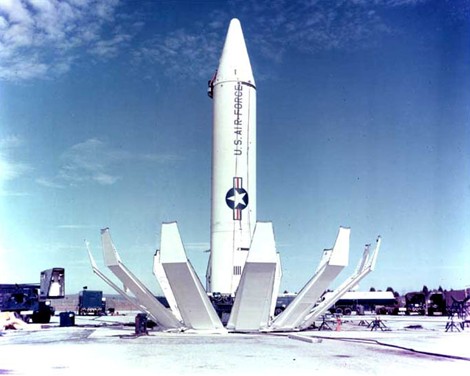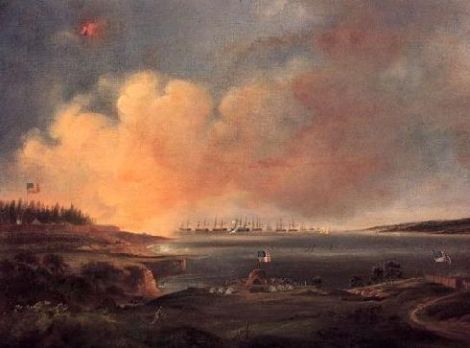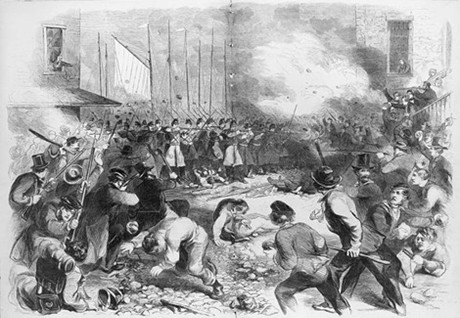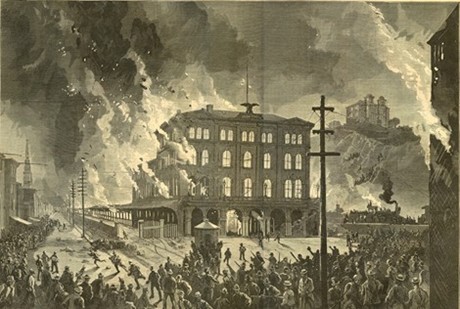It’s one thing when your dear old granny attempts to keep you from playing with weapons of mass destruction, but when that warning comes from a source that may not be any more responsible with the use of their toys than you are, well that can be a difficult pill to swallow–hence the challenges posed when one country endeavors to tell another country what is the acceptable methodology and hardware for poking out your neighbor’s eye. That is why the history of arms control is rife with hypocrisy, irony and downright silliness. But even if most of our efforts at promoting greater global stability and cooperation prove futile, the outcome and costs of a failed peace are in many instances preferable to that of a successful war.
As to the potential agreement that was struck with Iran, I find little reason not to give it an honest try, nor do I find the reasoning of those critics of that deal to be worthy of much consideration.
There are those who are already comparing the President and this pact to Neville Chamberlain’s capitulations to Hitler at Munich in 1938. There seems to be this underlying belief that we are negotiating with Iran from a point of weakness.That point of view is patently absurd. This is not pre-World War II Great Britain. We are by no means an unprepared, outgunned nation trying to buy some time. America has the capability, capacity and the will to wage war at a moments notice if we believe in the cause–and initially, we always believe in the cause.
Then there are those ever cheerful voices of doom and distrust, such as John Boehner and Benjamin Netanyahu, forewarning the world of the dire consequences to follow if we place even the slightest degree of reliance on the ability of the Iranians to adhere to the terms of any agreement. First off, Mr. Boehner’s personal displeasure with the President is always evident, and with so many of his fellow Republicans seeking to fill the comfy chair in the Oval Office his political posturing is quite predictable and perhaps even a touch more partisan than usual.
Now as to Mr. Netanyahu’s pronouncements on the matter, many of his concerns are certainly not unfounded nor are they lacking some historical basis.The Iranian leadership has for too long propagated a constant stream of malice and contempt toward Israel and her western allies. But as to whether or not that same government is worthy of our trust concerning a nuclear arms accord, the State of Israel might not necessarily be in the position to be staking out the high ground in that regard.
To that point:
- In 1949, Prime Minister David Ben-Gurion began a clandestine program to develop an atomic bomb.
- In 1957, as part of a quid pro quo deal with Israel, the French entered into a secret agreement to help build a reactor at Dimona that would eventually be capable of producing weapons grade fissionable materials. In exchange, France wanted the Israelis to attack Egypt so that both the British and French could enter into the conflict as joint peacekeepers with the real intent of gaining control of the Suez Canal. That phase of the deal ended when the threat of Soviet intervention in the region forced Great Britain and France to withdraw their forces.
- In 1960, the Eisenhower administration requested information concerning the ongoing development at the Dimona site that was recorded by U-2 flyovers. Israel claimed that the construction was for a future textile factory, but they refused to allow for any onsite inspections by American authorities.
- In 1964, the United States was thwarted in its attempt to keep Argentina from selling uranium concentrates (Yellowcake) to Israel.
- In 1968, Israel backed away from signing or ratifying the Nuclear Non-Proliferation Treaty.
- Under its continued decades-old policy of “nuclear ambiguity” Israel will neither confirm or deny the existence of its nuclear stores. But it is estimated that the Israelis possess somewhere between 75 – 400 nuclear warheads that could be delivered by way of aircraft, missiles or submarines.
While I certainly understand why Israel, a small country surrounded by a host of hostile neighbors, might resort to surreptitiously stockpiling weapons of mass destruction in order to counterbalance that threat. I also recognize the fact that the Iranians may be reluctant to give up on their own military ambitions knowing full well that those same countries brokering this tenuous arrangement are fully aware of Israel’s nuclear arsenal.The real solution would be for all nations to disclose and disarm. But it is probably way too late to put that atomic genie back in the box. So we are once again left with only two real options: war or exercising those fragile understandings and promises that possibly spare us from war. I highly recommend the latter.
Because there are certainly better uses for Uranium than building bombs for countries–and most definitely better uses for Titanium than constructing artificial limbs for soldiers!
Posted by: Chris Poh for American Public House Review


























































































































































































































